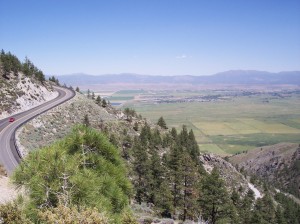If you have plans to head north to the mountains, know that driving in higher altitudes is a little trickier than what you are used to at lower ground. Not only do you have to contend with different weather patterns and environment, but also you have to be aware of windy roads, animals and falling rocks. If you are headed to the mountains, Hatfield Toyota offers tips for driving in the mountains.
Before you Leave
Before you head up to the mountains, take care of a few items of business first.
- Take the car in for regular maintenance and inspection
- Fill up the vehicle
- Pack plenty of fluids for you and your vehicle
- Pack a high-altitude care kit
Health Problems Associated with High Altitudes
When you are at high altitudes, you can run into a number of health issues.
- Dry air
If you are susceptible to nose bleeds in dry climates, take a nasal spray with you to prevent dry nasal membranes. Dry air can also cause dry eyes, so pack artificial tears or contacts drops.
- Altitude sickness
Before you leave, talk to your doctor about medications to combat altitude sickness. Symptoms of altitude sickness can arise within 72 hours of arriving. Symptoms include fatigue, sleep issues, nausea, no appetite, headache, and shortness of breath. If you experience any of the symptoms, seek medical help.
- Motion sickness
Motion sickness is common when driving in high altitudes. Consider packing an over-the-counter motion sickness medication and disposable bags if an emergency arises.
Tips for Driving
When you are driving in the mountains, adjust your driving habits to keep you and your passengers safe.
- Watch for pedestrians, bikers, and animals on the side of the road
- Do not coast downhill
- Use low gears to climb and descend
- Slow down on winding roads, around curves, and when cornering
- Avoid using the AC if you are concerned about overheating
- Don’t ride your brakes when going down hill






